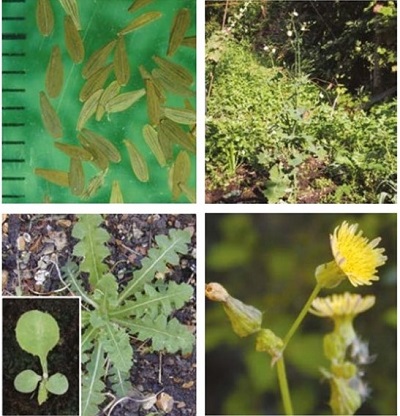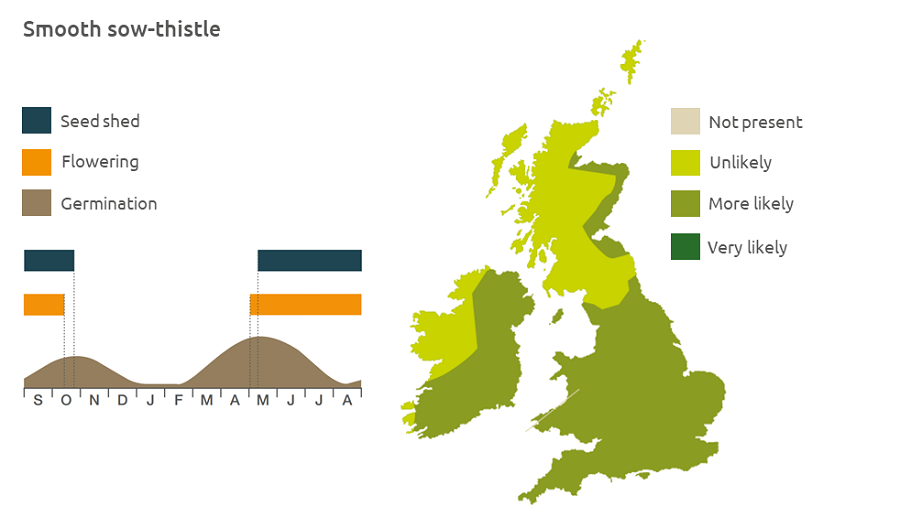- Home
- Knowledge library
- Distribution and biology of smooth sow-thistle in the UK
Distribution and biology of smooth sow-thistle in the UK
Smooth sow-thistle is found throughout the UK and is increasing in arable rotations. Find out how to identify and control this broad-leaved weed.
Overview
Smooth sow-thistle (Sonchus oleraceus) is increasing in arable rotations, particularly in winter crops. Autumn-germinating plants can overwinter as rosettes and flower in May; spring-germinating plants flower in June.
- It has value to biodiversity
Description
It is a branched and upright annual dicotyledon, 30–120 cm tall, sometimes tinged with red or purple. The yellow flowers are flask-shaped and grow in loose clusters.
Key features
Plant: The leaves are glossy and softly prickly with a wide triangular lobe at the tip, clasping the stem.

Location and life cycle

Geographic distribution
Growing to an altitude of 365 m, smooth sow-thistle is found on arable fields, verges, roadsides, gardens, waste lands and manure heaps.
Soil type
It likes nitrogen-rich loams or nutrient-rich sandy and stony soils which are not too dry.
Seed statistics
- Seed longevity: >5 years
- Germination depth: 2 cm
- Seed weight: 0.22 mg
- Seeds/head: 100
- Seeds/plant: Up to 100,000
Management
In row crops, hoeing is an alternative to herbicide use. Control in uncropped land to reduce seed return. Smooth sow-thistle does not persist in grassy rotations.
For advice on herbicides, please speak with your agronomist or adviser.
When was this information last updated?
This page is based on content from the encyclopaedia of arable weeds publication. Since it was first released in 2008, the publication has been redesigned several times but not revised. However, it remains a good foundation for general information on the distribution and biology of weeds.

